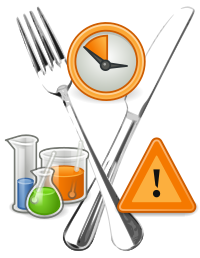
Photo from wikipedia
Tea is one of the most popular beverages all over the world. Being an everyday drink for almost everyone, for centuries tea was considered safe and healthy. However, fungal contamination… Click to show full abstract
Tea is one of the most popular beverages all over the world. Being an everyday drink for almost everyone, for centuries tea was considered safe and healthy. However, fungal contamination of tea at any stage of commodity production can pose a serious health hazard due to the accumulation of toxic secondary metabolites of moulds. Contemporary research revealed incidences of highly contaminated samples. Mycotoxin transfer from naturally contaminated raw tea into beverage was well studied for ochratoxin A only, and the possible leak of other mycotoxins is discussed. The results of several surveys were combined to evaluate aflatoxin B1 and ochratoxin A contamination levels in black tea and Pu-erh. Exposure estimate to aflatoxin B1 and ochratoxin A due to tea consumption was carried out based on these data. Average contamination level corresponds to the exposure of 3–40% (aflatoxin B1) and 5–24% (ochratoxin A) of mean overall estimates for different cluster diets. Lack of data does not allow the conclusion for the necessity of public health protection measures. It is necessary to perform representative studies of different kinds of tea for regulated mycotoxins at least. Contemporary techniques for analysis of mycotoxins in tea are summarised in the present review.
Journal Title: Toxins
Year Published: 2018
Link to full text (if available)
Share on Social Media: Sign Up to like & get
recommendations!